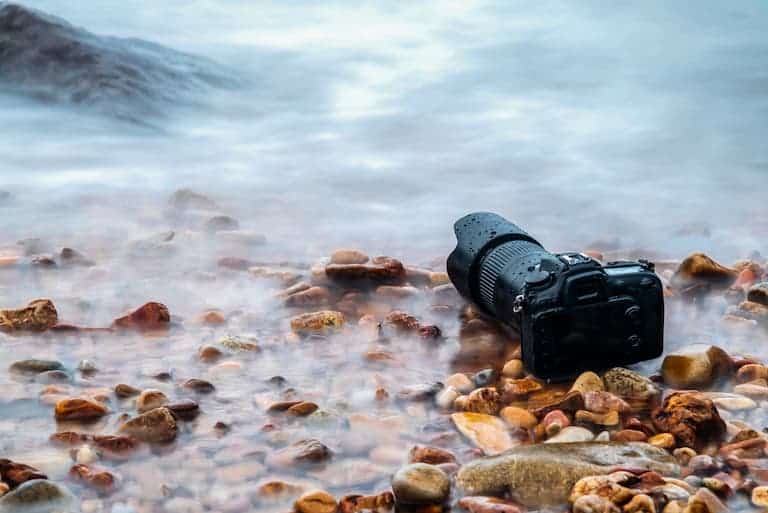Photography is about capturing the moment, regardless of the weather conditions. Photographers who work in areas with harsh climates and underwater need waterproof and water-resistant camera lenses to protect their cameras and photographs.
Not all camera lenses are waterproof. However, many are weather sealed to make them water-resistant. The rubber gaskets on lenses protect camera lenses from water and other elements, but only to a certain extent. Even underwater lenses need extra waterproofing.
Although camera lenses aren’t entirely waterproof, the weather sealing on most lenses is well done and allows them to withstand harsh weather conditions. This article will discuss weather sealed camera lenses and why they’re not considered fully waterproof.
Table of Contents
Are Camera Lenses Waterproof?
Photographs tell stories of events. Records of hurricanes, storms, and underwater activities have been preserved in photos with the help of weather sealed cameras and lenses. However, before exposing your camera to water, you need to know if your lens can withstand the moisture.
Camera lenses are not waterproof, but some are water resistant. They have rubber gaskets that protect vulnerable points where water can get into the camera. However, fully weather sealed camera lenses have custom buttons and electronic controls that keep the lens in place.
An IPX rating specifies how much water exposure the lenses or camera can withstand. Unfortunately, most camera lenses don’t have an IPX rating, and manufacturers are often vague about the waterproof feature of their lenses.
What’s the Difference Between Weatherproof and Waterproof Lenses?
Buying camera lenses should be an easy task, but it can actually be surprisingly challenging. You’ll probably come across some brands claiming that their lenses are waterproof, while others only advertise that they are weatherproof. When you know the difference, you can select the lenses most suitable for your needs.
The difference between weatherproof and waterproof lenses is that waterproof lenses are sealed to stay submerged in water without sustaining damage. Weatherproof lenses have limited protection against running water, dust, and other elements. These lenses may work in the rain, but not underwater.
If you’re taking photos underwater or in extreme weather, you need to ensure you get lenses with rubber gaskets and housing to make them waterproof. Fortunately, electronic buttons and stabilization features allow you to keep using the camera without having to adjust the lens while taking shots.
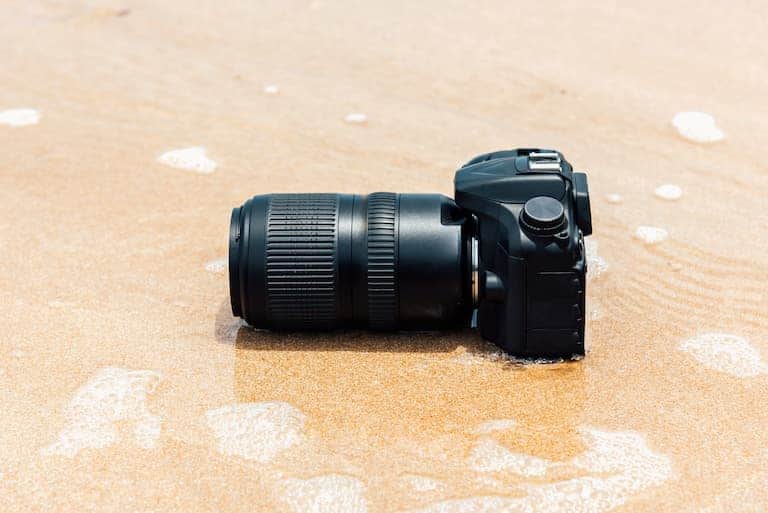
Does Weather Sealing Make Camera Lenses Waterproof?
Every time you take your camera out of its bag, it’s exposed to wind, rain, dust, and dirt, depending on where you’re taking the shots. Weather sealing allows you to use your camera in conditions you’d naturally avoid for fear of damaging your camera and images.
Weather sealing does not make camera lenses waterproof. However, it prevents dust, water, humidity, and snow from ruining your camera. Some lenses have weather sealing that can keep dripping water from getting into the camera, while others can be immersed in water for a short time.
Weather sealing varies from camera to camera, with some offering more protection and water resistance than others. However, you should look at the properties and manufacturer’s recommendations of your lens before attempting to use any weather sealed lenses in water.
Weather Sealed vs. Water-Resistant vs. Waterproof
The terms weather sealed, water-resistant, and waterproof are often mistaken to mean the same thing. Unfortunately, manufacturers can be extremely vague when using these terms to describe their lenses and cameras.
Waterproof Lenses Are Made for Water Submersion
Waterproof lenses and cameras can be submerged underwater. They don’t get water damage unless they’re faulty. However, the clarity of the lenses can be compromised at certain depths. A protective, waterproof housing may help preserve the integrity of the images you take.
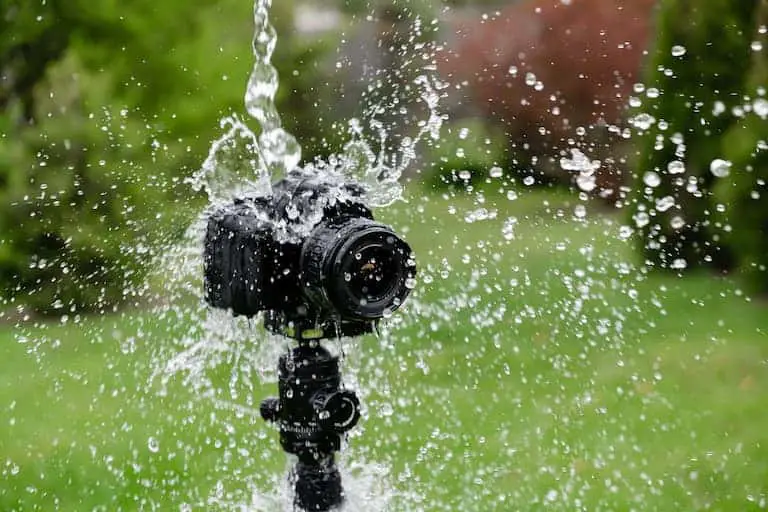
Water-Resistant Lenses Aren’t Fully Waterproof
Water resistant lenses have a lower level of waterproofing. They’ll be fine in a drizzle or if water splashes on them. The resistance also applies to freezing conditions and snow flames. However, you’d pay attention to other kits, such as the battery and memory cards which may not suit harsh weather conditions.
Weather Sealing Doesn’t Protect From Water Submersion
Weather sealing has a close meaning to water resistance, but it’s more specific to rain than water. Weather sealing is the vaguest, and it’s also the term most often used to describe lenses and cameras.
Weather sealing may be indicative of temperature, dust, or water exposure. Weather-sealed lenses and cameras aren’t the same, so you need to determine the specifications before deciding which one most suits your photography needs.
How To Tell Your Camera Lenses Are Weather-Sealed?
Weather sealing is a loose term that often means different things to camera lens manufacturers. There is no standard on weather sealing. This is why some manufacturers claim that newer models have upgraded weather sealing, which implies the previous models were only protected to a limited extent.
Weather-sealed lenses and cameras have seals around points where water and dust can penetrate the camera’s exterior. Here are some examples of lens manufacturers that weather-seal their lenses:
- Some brands, such as Olympus and Pentax, have metal bodies that extend to high-end lenses and cameras.
- Canon 1d, 5d, and 7d series are weather and metal sealed for optimal protection.
- Canon L-series lenses are weather sealed.
Weather-sealed lenses and cameras will be fine in a drizzle, but they may not withstand a downpour or immersion in water. Lenses that are weather-sealed with metallic bodies may be used in water. However, you can only use them at a certain depth or for a specific duration of time if you want to get clear pictures.
The Canon EF 50mm f/1.2 L USM Lens (available on Amazon.com) is weather resistant, has full-time manual focus, and a 72mm (2.87 inches). It uses an Ultrasonic Motor (USM). However, the lens isn’t zoomable.
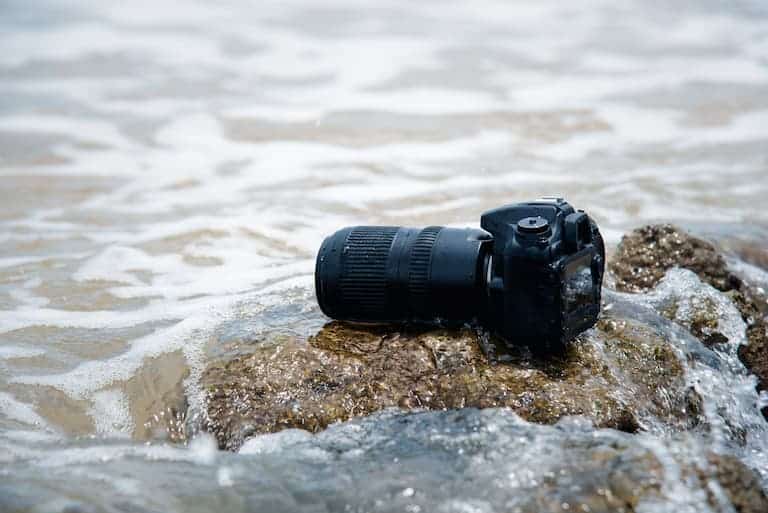
Importance of Weather Sealing on Camera Lenses
Weather sealing is more common in high-end cameras and lenses. With your budget in mind, you need to decide if you need weather sealing or not. Weather sealing is important for the following reasons:
- If you are interested in sports and landscape photography, a weather sealed camera lens will allow you to keep taking photos regardless of weather changes.
- It helps to keep dust from forming spots on your lenses.
- It helps to keep condensation from forming in the camera.
- It protects your camera in case of a sudden change in weather.
- It gives you the freedom to take great shots without worrying about the weather.
Weather sealing has its benefits, and if you can afford higher-quality camera lenses, you should go for the extra protection. However, you don’t need weather sealed lenses if you’re unlikely to find yourself outdoors in extreme weather.
This YouTube video analyzes weather sealing in lenses and whether they’re a necessity or a marketing gimmick:
Are Weather-Sealed Lenses Worth the Price?
When buying lenses, you’ll notice that those with weather seals are more expensive. In fact, except for Pentax, most of these lenses are high-end models. It is natural to question whether it’s worth paying more for the extra protection.
Weather-sealed lenses are worth the price if you need them. If you often find yourself shooting in unpredictable environments where your camera is at risk of exposure to dust, dirt, and water, weather-sealed lenses are worth it. They’ll protect your camera and ultimately save you money.
However, if you purchase weather-sealed lenses but never encounter a situation where they’re useful, then you have wasted your money on a feature you don’t need. You probably would’ve put the money to better use by getting higher-quality lenses or other camera accessories.
Features of Weather-Sealed and Weatherproofed Lenses
Considering the recent advancements in smartphones’ IP ratings, it can sometimes feel like cameras and lenses are falling behind. However, technology has changed dramatically over the years. Although camera sealing isn’t standardized, most manufacturers offer some degree of weather sealing. Still, some lenses have more advanced weather-sealing than others.
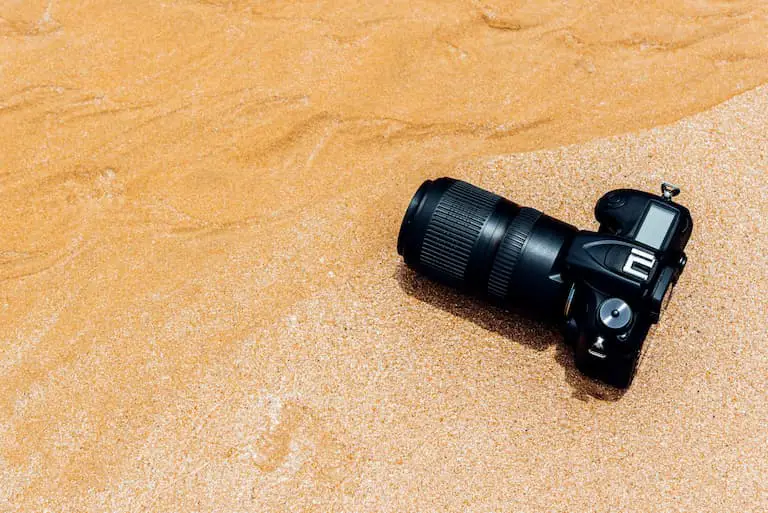
Before buying weather sealed lenses, consider the following factors:
- The IPX rating.
- The number of seals used for weather sealing.
- Check if the seal covers the whole body or just the barrel.
- Find out if the lens needs additional protection at the front.
- Check the lens classification of each brand. For example, Sigma Art Lenses are completely weather sealed, while Sigma Contemporary Lenses are only sealed at the mount.
This Panasonic 12-60mm F2.8-4 Mirrorless Micro Four Thirds Lens (available on Amazon.com) has upgraded faster focus, smooth transitioning abilities, sharp image quality, and advanced image stabilization. The lens’s weather sealing is splashproof, dustproof, and freezeproof.
This video tests weatherproofing in two brands of lenses to see which sealing offers greater protection:
IPX Ratings and What They Mean
Cameras and lenses specially made for professional photographers almost always have some form of weather sealing. Manufacturers have gone a step further by providing excellent weather sealing that is awarded IP or IPX ratings (Ingress Protection Ratings). These ratings are standards given by the International Electrotechnical Commission (IEC).
These ratings make it easier for buyers to determine the degree of protection the weather sealants give to the lenses and camera. Unfortunately, most brands are yet to get their cameras, lenses, and weather sealings graded. Leica and Olympus are the most well-known brands that have rated lenses.
| IPX Rating | Solids | Liquids |
|---|---|---|
| IPX 0 | No protection | No protection |
| IPX 1 | Protected against solid particles greater than 50mm (1.97 inches), about the same width as a hand. | Product is protected against water dripping vertically. |
| IPX 2 | Protected against solid particles greater than 12.5mm (0.49 inch) in size, or about finger-width. | Resists water from a 15 degree angle or less. |
| IPX 3 | Protected against solids greater than 2.5mm (0.1 inch) in size. | Can resist water sprays up to a 60 degree angle. |
| IPX 4 | Protected against solids greater than 1.0mm (0.04 inch) in size. | Resistant to water splashes coming from any direction. |
| IPX 5 | Dust protected. | Resistant against jets coming from all directions. |
| IPX 6 | Sealed to protect against dust. | Resistant against powerful jets and rough seas. |
| IPX 7 | Almost completely dust-tight. | Protected against effects of temporary water submersion for 30 minutes, at 3ft (0.91m). |
| IPX 8 | Tightly sealed from dust. | Protected against permanent effects of water submersion over 30ft (9.14m) deep. |
The IPX rating is one of the best ways to tell the level of protection on cameras and lenses. For example, OM Digital Solutions (formerly Olympus) announced that M.Zuiko 12-40mm f/2.8 Pro II and M.Zuiko 40-150mm f/4 Pro, previously rated IPX 1, now have additional protection. This added protection raised the lenses’ rating to IPX 3.
The Olympus Zuiko 12-40mm Lens (available on Amazon.com) is weather sealed. It’s splashproof, dustproof, and freezeproof. The kit comes with a lens hood (LF-66), lens cap 9LC-62D), and lens case (LSC-0918). It’s compatible with Panasonic m4/3 and Olympus cameras.
Here is a video reviewing an IPX rated Olympus E-X1 lens and an illustration on the conditions it can withstand:
How To Weatherproof Your Lenses
Since most of the lenses in the market are not IPX rated, it’s difficult to know your lenses’ limits.
If you aren’t confident that your lenses can withstand excessive exposure to water, dust, and other elements, you can take the following precautions to protect them:
- Use a one-time rain sleeve.
- Cover your camera with a large plastic bag.
- Use a DSLR rain sleeve. It costs a little more than the one-time sleeve, but you’ll be able to use it for a long time.
This Movo 5 Pack DSLR Rain Cover (available on Amazon.com) covers a tripod, camera, and up to 18 inch (457.2mm) long lenses. The see-through polythene offers full protection against dust, mud, and rain.
Conclusion
Weather sealed lenses aren’t cheap. You need to know how much protection you’re getting from their seals.
If the manufacturer doesn’t offer details on the level of protection on your lenses, looking into an IPX-rated lens is the safer choice. Note that you shouldn’t take the waterproof label for granted; most of these lenses have limits beyond which water leaks into the camera.

